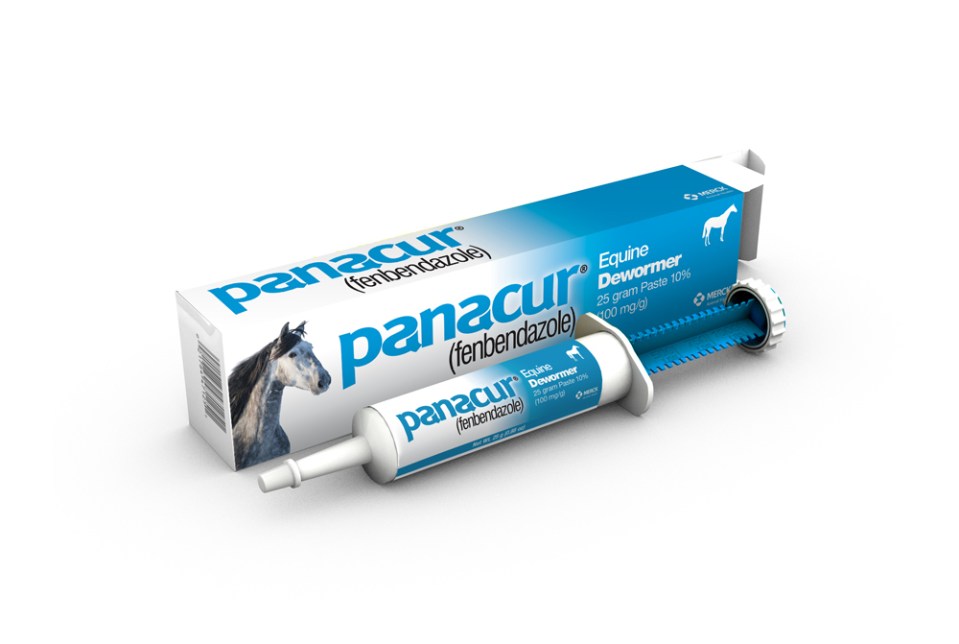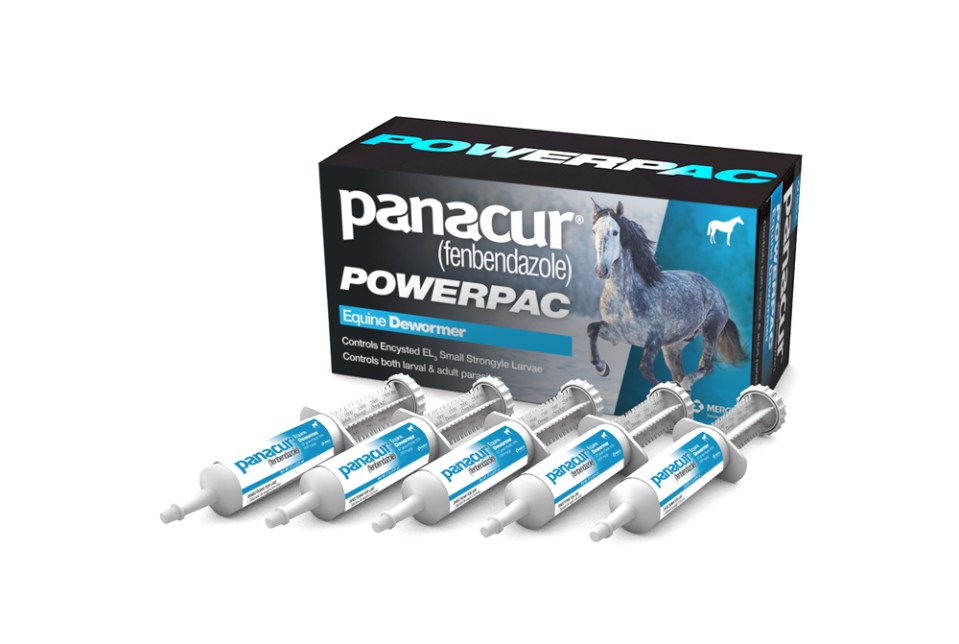
Small strongyles
Parasite Overview
Small strongyles, or cyathostomins, are considered the most common internal parasite of horses today. Cyathostomins are extremely common, and almost all grazing horses are infected. However, horses vary in their susceptibility to clinical illness. Clinical disease—larval cyathostominosis—is caused by mass emergence of encysted cyathostomin larvae from the walls of a horse’s large intestine, causing weight loss, weakness and diarrhea.
Merck Animal Health Solutions

PANACUR® (fenbendazole) PASTE 10%
PANACUR® Paste 10% is indicated for the treatment and control of large strongyles (Strongylus edentatus, S. equinus, S. vulgaris), encysted early third stage (hypobiotic), late third stage and fourth stage cyathostome larvae, small strongyles, pinworms (Oxyuris equi), ascarids (Parascaris equorum), and for the control of arteritis caused by fourth stage larvae of Strongylus vulgaris in horses.

PANACUR® (fenbendazole) POWERPAC
PANACUR® (fenbendazole) Paste 10% is indicated for the control of large strongyles (Strongylus edentatus, S. equinus, S. vulgaris), encysted early third stage (hypobiotic), late third stage and fourth stage cyathostome larvae, small strongyles, pinworms (Oxyuris equi), ascarids (Parascaris equorum), and arteritis caused by fourth stage larvae of Strongylus vulgaris in horses.
Parasite Life Cycle
- Horse ingests infective larvae, which migrate into the walls of the large intestine and form cysts.
- Mature larvae exit the cysts and migrate back to the intestinal lumen, where they become adults.
- Adult strongyle worms produce eggs that are passed in the feces.
- Eggs become infective larvae in pasture.
Clinical Signs
- Profuse, watery diarrhea that comes on suddenly
- Dehydration
- Circulatory shock
- Edema of the sternal region, genital tissue and distal limbs
- Colic signs
- Weight loss
- Body temperature can be elevated, normal or decreased
Risk Factors
- Age less than 3 years old
- Contaminated environment
- Environmental conditions conducive to egg and larval survival (mild temperatures)
- Presence of “high egg shedder” horses in herd
Important Safety Information
Do not use in horses intended for human consumption.
References
“AAEP Internal Parasite Control Guidelines,” American Association of Equine Practitioners, 2019,
aaep.org/sites/default/files/2021-03/Internal_Parasite_Guidelines.pdf.
Thomas R. Klei, “Gastrointestinal Parasites of Horses,” Merck Veterinary Manual, May 2019,
www.merckvetmanual.com/horse-owners/digestive-disorders-of-horses/gastrointestinal-parasites-of-horses.
Martin K. Nielsen, “Larval Cyathostominosis in Horses,” Merck Veterinary Manual, December 2019,
www.merckvetmanual.com/digestive-system/gastrointestinal-parasites-of-horses/larval-cyathostominosis-in-horses.
“Parasites: Small Strongyles,” Extension Foundation, July 31, 2019, horses.extension.org/parasites:-small-strongyles.
